Mastering the Electrical Panel Board: A Guide for UAE & GCC Professionals
An electrical panel board is the command center for a facility's entire electrical system. It takes the main power feed from the utility and safely distributes it to all individual circuits. Housed in a robust enclosure, this critical assembly contains circuit breakers and other essential electrical components designed to manage and protect your power infrastructure, a crucial element for any project in the UAE and wider GCC.
The Heart of Your Building's Electrical System
An electrical panel board is far more than just a metal box tucked away in a service closet; it is the central nervous system of your facility's power. For any modern building in the UAE, from Dubai's soaring skyscrapers to Abu Dhabi's sprawling industrial plants, this panel is the linchpin holding your entire operation together, making it a key part of any energy management solution Dubai requires.
This central hub takes the main power supply from the utility and intelligently divides it into smaller, manageable circuits. Each circuit is dedicated to powering specific loads—lighting, HVAC systems, or heavy-duty machinery on a factory floor. This controlled distribution is what prevents overloads and ensures a safe, steady flow of electricity.
Here’s a quick breakdown of a panel board's primary duties:
Core Functions of an Electrical Panel Board
| Function | Description | Key Components Involved |
|---|---|---|
| Power Distribution | Receives the main power feed and divides it among smaller branch circuits. | Main Circuit Breaker, Bus Bars |
| Circuit Protection | Safeguards individual circuits from overcurrents (overloads and short circuits). | Branch Circuit Breakers (MCBs, MCCBs) |
| System Isolation | Allows the entire system or individual circuits to be safely de-energized for maintenance. | Main and Branch Circuit Breakers |
| Safety | Provides a grounded, enclosed housing to prevent accidental contact with live parts. | Enclosure, Grounding Bar |
Essentially, the panel ensures that power is not just available, but also safe, reliable, and properly managed according to local standards.
Why a Robust Panel is Critical in the GCC
In the demanding climate of the GCC, choosing the right electrical panel isn't just a compliance task—it's a critical decision for business continuity. The region's unique environmental challenges—extreme heat, high humidity, and pervasive dust—place enormous stress on electrical equipment.
- Component Failure: High ambient temperatures can degrade components, causing premature failure and triggering costly, crippling downtime.
- Corrosion: High humidity accelerates corrosion on terminals and bus bars, creating poor connections that pose a serious fire hazard.
- Dust Ingress: Fine dust can easily penetrate unprotected panels, compromising insulation and creating conditions for short circuits.
Therefore, investing in a high-quality electrical panel board with a suitable IP (Ingress Protection) rating and compliance with IEC standards is non-negotiable. It is the fundamental step to ensuring your systems in Dubai or across the GCC remain safe and reliable.
A Growing Market Driven by Innovation
The critical role of robust electrical systems is reflected in the market's significant growth. The Middle East's distribution panel market was valued at around USD 657.1 million in 2023 and is on a steep upward trajectory, fueled by the region's intense industrialization and urbanization.
This growth isn't just about more panels; it's about smarter ones. There is a huge demand for advanced energy management solutions that can handle local conditions while integrating with modern tech like IoT and smart grids. You can explore the full market analysis in this detailed report from Grand View Research.
Exploring the Anatomy of a Panel Board
To truly understand an electrical panel board, you must look inside. Beyond the steel door lies a collection of engineered components, each with a specific role in managing and distributing power safely. For any engineer or technician in the UAE, understanding this anatomy is key to specifying, installing, and maintaining systems that can withstand local demands.
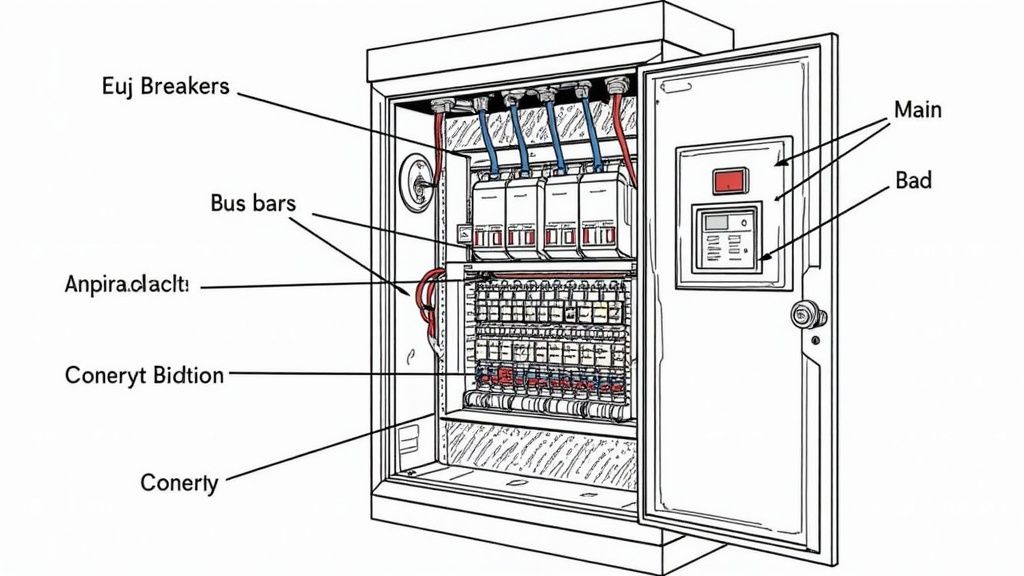
Think of it as the building's command center. Power enters through a main gateway, travels along primary routes, and is then split off to individual circuits, each protected by its own dedicated guard.
The Main Circuit Breaker
The main circuit breaker is the gatekeeper for the entire panel. It's the first stop for incoming power from the utility and serves two critical functions: it acts as a master switch to de-energize the entire building, and it protects the system from dangerous overcurrents.
In commercial and industrial settings across Dubai and the GCC, you'll typically find a Moulded Case Circuit Breaker (MCCB) or an Air Circuit Breaker (ACB) in this role. The choice depends on the facility's total electrical load. To see how these fit into the bigger picture, review our guide on the major components of an electrical control panel.
Bus Bars: The Power Superhighway
Once electricity passes the main breaker, it reaches the bus bars. These are solid strips of conductive metal—typically copper or tinned copper—that act as a power distribution highway inside the panel. They carry high-current electricity from the main breaker to the smaller branch circuit breakers.
In the high-humidity environment common in the energy meter GCC region, the material for bus bars is critical. While aluminum is an option, copper offers superior conductivity and significantly higher resistance to corrosion. This ensures a more reliable connection and minimizes the risk of overheating and failure.
Branch Circuit Breakers
Lined up along the bus bars are the branch circuit breakers. These are the individual security guards for each circuit. Typically, these are Miniature Circuit Breakers (MCBs), and each one protects a specific downstream circuit—for lighting, outlets, or a single piece of machinery—from overloads and short circuits.
The selection of these breakers reflects the facility's needs. The circuit breaker market in the Middle East and Africa, a vital part of any electrical panel board, was valued at USD 2.11 billion in 2024 and is expected to hit USD 3.44 billion by 2032. This reflects the increasing demand for advanced protection, fueled by massive infrastructure projects and the push toward renewable energy.
Neutral and Grounding Bars
Finally, every panel includes two other safety-critical components:
- Neutral Bar: A common connection point for all neutral wires, providing the return path for the current to complete the circuit.
- Grounding Bar (or Earth Bar): Connects all ground wires to the building's main grounding system, providing a safe path for fault currents to the earth.
Choosing Your Panel Board Type and Application
When it comes to power distribution, not all panel boards are the same. Selecting the right type is critical for any project in the UAE and GCC to ensure efficiency, safety, and compliance. The electrical system's structure is a clear hierarchy, with different boards handling specific jobs from the main power line down to the final socket.
The Main Distribution Board (MDB) is the heart. It takes the main feed from the utility transformer and distributes power throughout the facility. From there, Sub-Main Distribution Boards (SMDBs) act as major arteries, directing power to specific areas or floors. Finally, Final Distribution Boards (DBs) are the capillaries, delivering electricity to individual circuits.
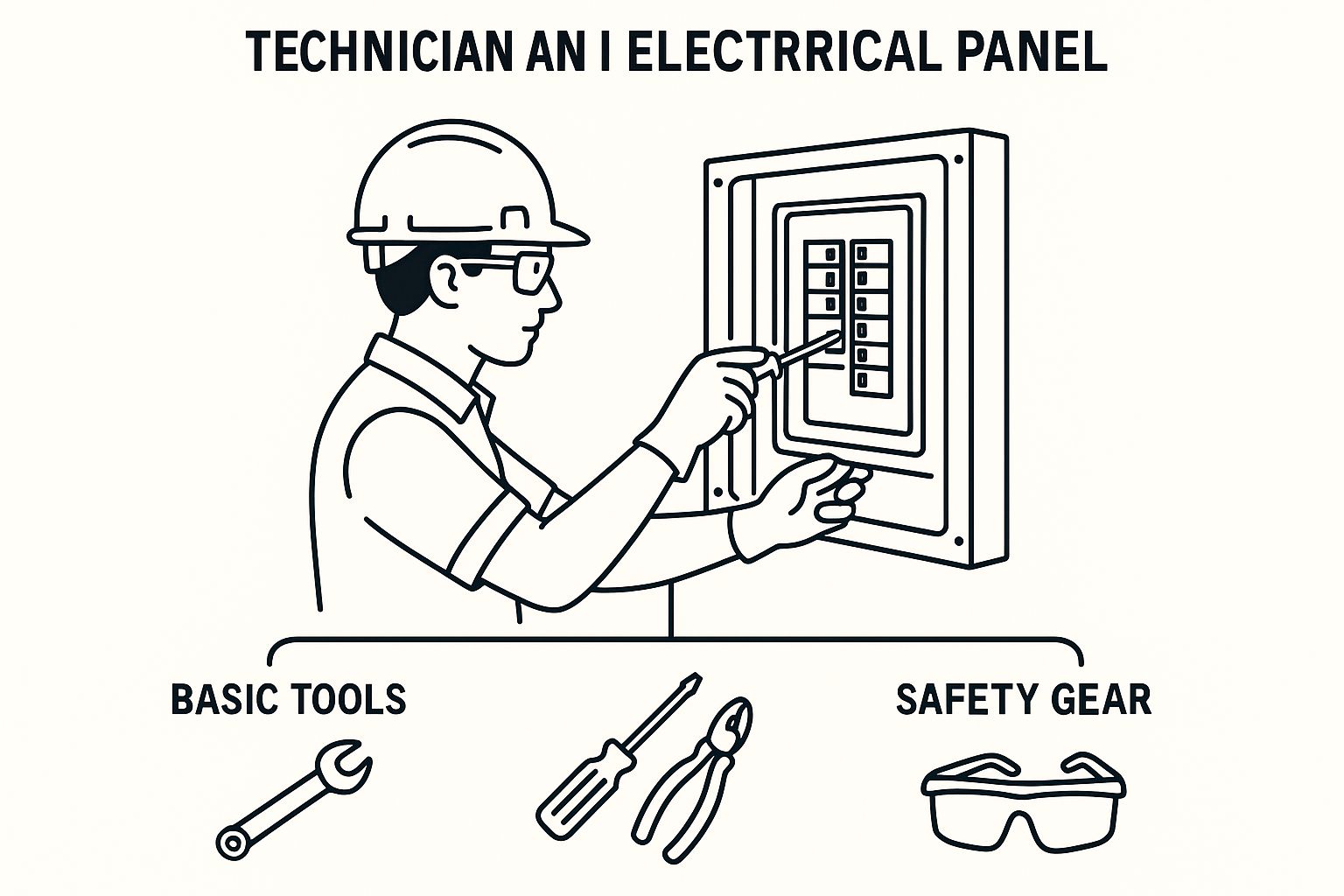
Getting this tiered structure right is fundamental to designing a logical and safe power distribution network.
Main Distribution Board (MDB)
The MDB is the first line of control after the utility's transformer. This is where the main incomer—usually a robust Air Circuit Breaker (ACB) or a high-ampacity MCCB—is located. Its job is to distribute power to SMDBs and large direct loads like central chillers.
For a large-scale Dubai project, the MDB is a significant piece of switchgear. It must be engineered to handle enormous electrical loads and is the cornerstone of the building's entire energy management solution Dubai. Specifying an MDB requires meticulous load calculations and strict adherence to local utility standards like DEWA or ADDC.
Sub-Main Distribution Board (SMDB)
An SMDB is the intermediary, taking its power feed from the MDB to supply a cluster of final distribution boards within a specific area. This modular design simplifies wiring, helps isolate faults, and makes maintenance easier to manage.
- Commercial Example: An Abu Dhabi office tower would likely have its own SMDB on each floor, feeding all the Final DBs for lighting and power on that level.
- Industrial Example: A manufacturing plant in KSA might have a dedicated SMDB for a single production line, powering its machinery and control panels.
Final Distribution Board (DB)
The Final DB is the last stop on the power journey. Also called a consumer unit or branch panel, it takes power from an SMDB and splits it into the final circuits that supply everyday devices. This is the electrical panel board most people recognize, found in apartments, small offices, and retail shops.
A Final DB’s most critical job is providing fine-tuned circuit protection. It is equipped with Miniature Circuit Breakers (MCBs) and Residual Current Circuit Breakers with Overload protection (RCBOs) to protect people and equipment from overcurrents and earth faults—a non-negotiable safety requirement under UAE regulations.
How to Select the Right Electrical Panel Board
Picking the right electrical panel board is a critical decision that impacts the entire life of a facility in the UAE or KSA. It’s about more than matching power specs; it ensures safety, efficiency, and future-readiness.
Let’s walk through a practical framework for specifying a panel board that performs reliably for years.
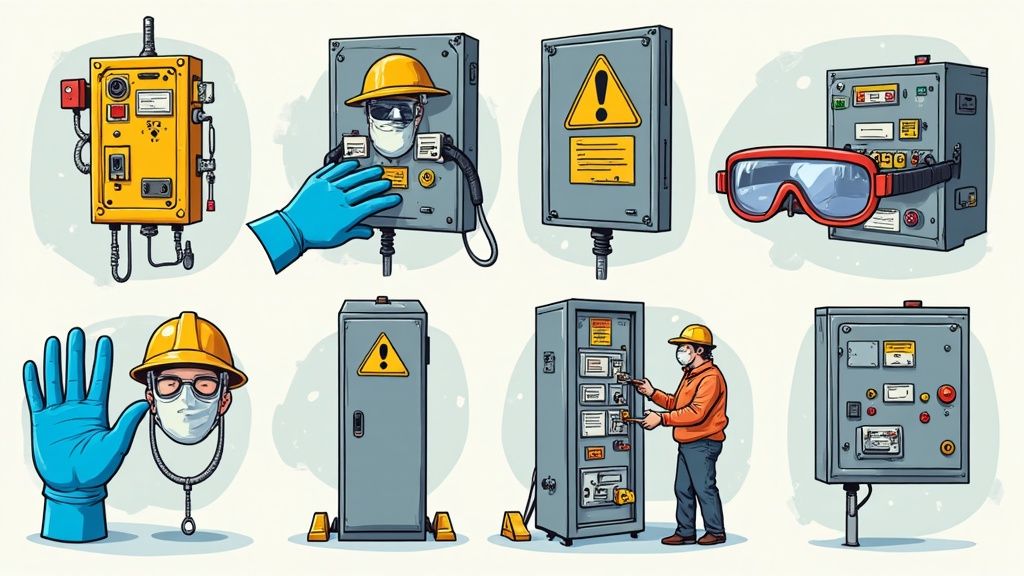
Step 1: Calculate Your Total Electrical Load
First, you must know exactly what you are powering. Conduct a thorough audit of every piece of equipment, lighting fixture, HVAC unit, and outlet the panel will serve. It is essential to calculate electrical load accurately.
A panel that is too small will constantly trip breakers and cause premature component failure. An oversized panel is wasted capital. The goal is to meet today's needs with a smart buffer for tomorrow.
Step 2: Determine Voltage and Amperage Ratings
With your total load calculated in kilowatts (kW), you can determine the panel's required voltage and amperage. In the UAE and across the GCC, the standard for three-phase systems is typically 400/231V. Your panel’s amperage rating must be high enough to handle the total calculated load, plus a healthy safety margin.
Best Practice for Future-Proofing: Always plan for growth. A solid rule of thumb is to size your panel with at least 20-25% spare capacity. This foresight allows for future expansion without the massive expense of replacing the entire panel.
Step 3: Specify the Required Number of Circuits
Next, map out the number of individual branch circuits needed. Assign a dedicated circuit breaker to each significant load. You'll need a mix of single-pole breakers (for 231V loads) and three-pole breakers (for 400V machinery).
Again, think ahead. Ensure the panel has plenty of spare slots for easy, cost-effective expansion. This practical planning distinguishes a good low-voltage control panel design from a great one.
Step 4: Select the Right Enclosure for the GCC Climate
In the demanding environments of the UAE and KSA, the enclosure is as important as its contents. The panel's enclosure is your primary defense against the elements, measured by an Ingress Protection (IP) rating.
- For Indoor, Climate-Controlled Environments (e.g., offices, data centers): An IP42 or IP43 rating is usually sufficient.
- For Outdoor or Harsh Industrial Environments (e.g., factories, coastal sites): Specify at least IP55 or IP65. These enclosures are dust-tight and can handle water jets, which is non-negotiable for protecting sensitive electronics from the region's dust and humidity.
Panel Board Selection Criteria Comparison
The right choice for a commercial tower in Dubai differs from what's needed for a factory in Saudi Arabia. This table breaks down how priorities shift depending on the environment.
| Selection Factor | Commercial Building (e.g., Dubai Office Tower) | Industrial Facility (e.g., KSA Factory) | Key Consideration |
|---|---|---|---|
| Amperage Rating | Moderate (e.g., 250A-800A SMDB) | High (e.g., 1600A-4000A MDB) | Must support the total calculated load with a 20-25% safety margin. |
| Enclosure IP Rating | IP42 (for indoor) | IP55 or higher (for dusty/damp areas) | Crucial for preventing dust and moisture ingress in harsh GCC climates. |
| Bus Bar Material | Tinned Copper | Tinned Copper (Essential) | Copper offers superior conductivity and corrosion resistance in humid conditions. |
| Future Capacity | 15-20% spare circuits | 25-30% spare circuits and capacity | Industrial sites often have more dynamic load requirements over time. |
Context is everything. An industrial facility requires more room for future growth and a much tougher enclosure. Weighing these factors ensures your panel board is a long-term asset, not a future liability.
GCC Installation and Maintenance Best Practices
Properly installing and rigorously maintaining an electrical panel board are the pillars of a safe, compliant, and long-lasting system in the challenging climates of the UAE and KSA. These are absolute necessities for operational continuity and safety.
An electrical panel is not a "set and forget" device. It requires precise, professional installation followed by a disciplined maintenance routine to combat the harsh local environment. Before installation, accurate budgeting is crucial. Procurement teams can use tools like a Construction Material Cost Predictor to plan for high-quality enclosures, cabling, and hardware.
Best Practices for Panel Board Installation
A perfect installation is the foundation for reliable service and must strictly follow local codes from authorities like DEWA or SEC.
- Secure Mounting: The panel must be mounted securely on a flat, stable surface, perfectly level and plumb to avoid stress on the enclosure and components.
- Adequate Clearance: Follow local authority regulations for clearance around the panel for safe operation, maintenance access, and heat dissipation.
- Correct Wiring and Torqueing: Tighten every wire termination to the manufacturer’s exact specifications using a calibrated torque wrench. Loose connections are a primary cause of overheating and arcing.
A faint buzzing sound or a burning smell from a panel is a critical warning sign of a loose connection and requires immediate professional attention to prevent a potential electrical fire.
Common Installation Mistakes to Avoid
Even experienced technicians can make mistakes. Knowing common pitfalls helps avoid them.
- Ignoring IP Ratings: Never install an indoor-rated panel (e.g., IP42) in a dusty, humid, or outdoor location. Match the enclosure's IP rating to the environment.
- Overcrowding the Panel: Filling every slot on day one leaves no room for future expansion and restricts air circulation, leading to overheating.
- Improper Cable Entry: Use correctly sized cable glands to maintain the enclosure's IP rating and prevent dust and moisture ingress.
A Proactive Maintenance Schedule
Preventative maintenance is the best defense against unplanned downtime. A clear, documented schedule is essential for any facility manager in the GCC.
Annual Visual and Mechanical Inspection:
- Check for signs of corrosion on terminals and bus bars.
- Look for physical damage to the enclosure or breakers.
- Ensure all labels are clear and legible.
- Physically operate breakers to ensure they function correctly.
Biennial Thermographic Inspection:
- Use a thermal imaging camera to reveal "hot spots" caused by loose connections or overloaded circuits long before they become visible. This non-invasive method is an indispensable service for any critical facility.
Navigating UAE and KSA Electrical Standards
Working in the UAE and Saudi Arabian electrical markets requires strict compliance. Adhering to standards from the outset is the foundation of any successful electrical panel board installation, ensuring safety, performance, and project approval.
The bedrock of modern panel board safety is the IEC 61439 standard. It is the definitive rulebook for low-voltage switchgear and controlgear assemblies, covering everything from thermal performance to short-circuit withstand capability.
Key Local Authority Requirements
While IEC 61439 sets the international benchmark, you must follow specific regional authority rules.
- DEWA (Dubai Electricity and Water Authority): Known for its strict technical specifications, DEWA requires meticulous documentation and pre-approved components for any panel in a Dubai project.
- SEWA (Sharjah Electricity and Water Authority): SEWA enforces its own detailed regulations for the design, installation, and inspection of electrical panels in Sharjah.
- SEC (Saudi Electricity Company): For any project in KSA, SEC compliance is mandatory. Their standards cover everything from enclosure types to specific protection schemes.
Third-party type-testing and certification from respected labs like ASTA or KEMA provides undeniable proof that your panel assembly meets the highest safety standards, smoothing the approval process with local authorities.
The Business Case for Compliance
The electrical equipment sector in the Middle East and Africa is booming, with the electrical panel board segment expected to generate around USD 32 billion in sales revenue in 2024. As new infrastructure projects drive this growth, scrutiny on quality and compliance intensifies. You can read the full electrical equipment market research for more details.
Mastering these standards is a strategic advantage. It guarantees every installation is safe, dependable, and fully compliant, protecting both your client's assets and your reputation. For more information, check our guide on essential electrical protection equipment.
We Get These Questions All The Time
Our engineering and procurement clients in the GCC often have key questions about specifying, installing, and maintaining an electrical panel board. Here are clear answers from our team.
What Is the Difference Between an MDB and an SMDB?
The MDB (Main Distribution Board) is the master panel, receiving power directly from the utility transformer and handling the entire facility's load. From there, power flows to SMDBs (Sub-Main Distribution Boards), which feed specific areas, like a single floor or a production line. The MDB is the main trunk of the electrical tree, and SMDBs are the large branches.
Why Is an IP Rating So Important for Panels in the UAE?
The UAE's environment of fine dust and high humidity is harsh on electrical gear. The IP (Ingress Protection) rating is non-negotiable. A higher rating, like IP55 or IP65, provides robust defense for the sensitive electrical components UAE suppliers provide. This is essential for preventing corrosion and component failure, ensuring long-term safety and reliability.
How Often Should Commercial Electrical Panels Be Inspected?
A structured inspection schedule is vital for preventative maintenance in the GCC.
- Annual Visual Inspection: A qualified technician should perform a visual check once a year for damage, corrosion, or dust buildup.
- Biennial Thermographic Inspection: Every one to two years, a professional thermographic scan is strongly recommended to detect "hot spots" from loose connections before they become major hazards.
Is It Better to Upgrade or Replace an Old Electrical Panel?
The "repair or replace" decision depends on several factors. An upgrade may suffice if you only need a few new circuits and the main busbar has spare capacity.
However, if you are planning a major load increase, or if the panel is obsolete and fails to meet current IEC or local authority standards (like DEWA), a full replacement is the only safe path. The same applies if there are visible signs of corrosion or overheating. Always consult a qualified engineer for a thorough assessment.
For expert guidance on selecting, specifying, or maintaining the right electrical panel board for your projects in Dubai or Abu Dhabi, trust GoSwitchgear to deliver compliant, high-quality solutions.
Explore our extensive range of electrical components and get project support by visiting us at GoSwitchgear.



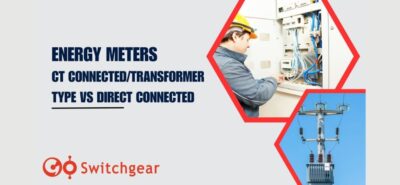
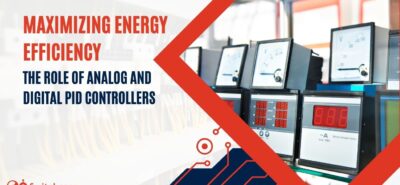
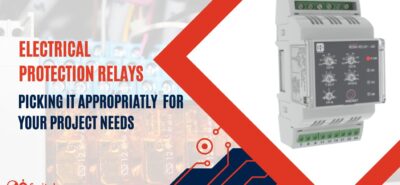
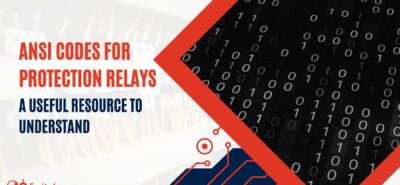
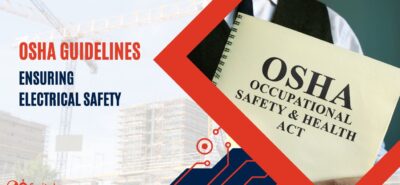


Leave a Reply